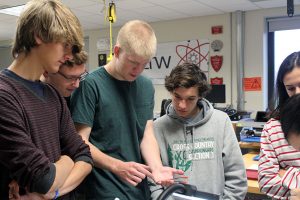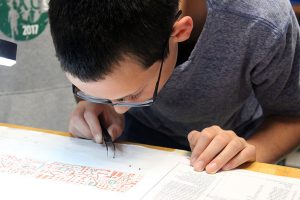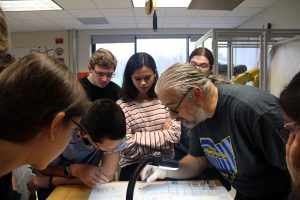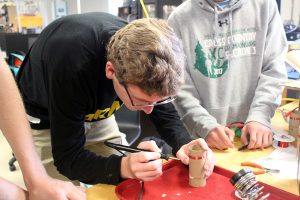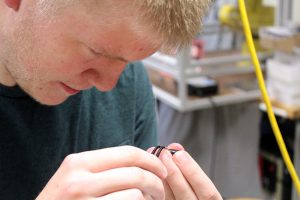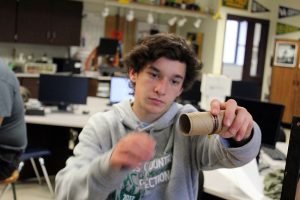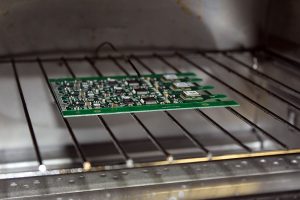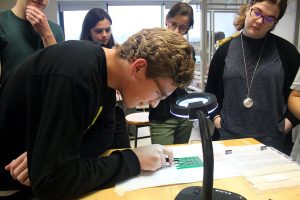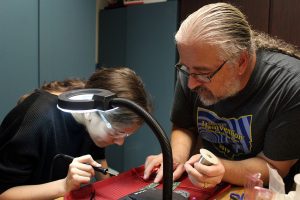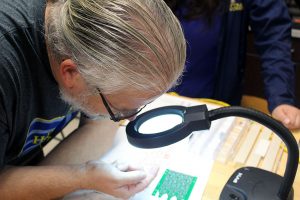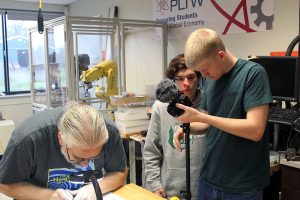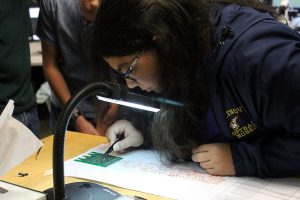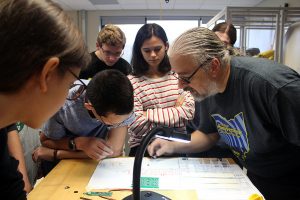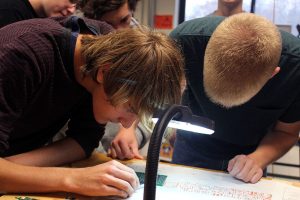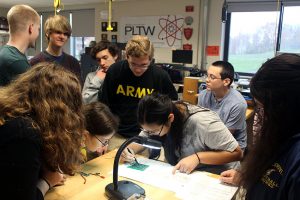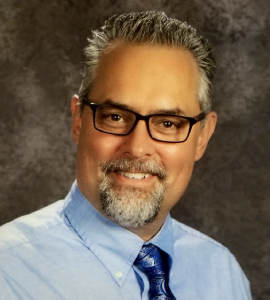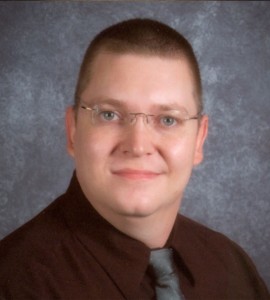Caz High School Students to go to space...Again!
A crew of ten Engineering design & development (EDD) students in Cazenovia High School’s Tech Club have decided to go to the air again. In 2015 they went into space the first time when sent a High Altitude Balloon into space. They brought back HD video and science data that included temperature, pressure, altitude, and GPS headings as they flew to over 120,000 feet and recovered the balloon. See the article and video here. This year students have decided to try to circumnavigate the globe with another high altitude balloon and track it on the internet with a circuit that they have built.
Mike and Jules Hojnowski from Cornell trekked to Caz to help the students build the trackers. The Hojnowskis are avid Ham radio operators and enjoy traveling around to help students build their own trackers following Mike H’s design. Additionally, students will also have a PROM to celebrate their achievements and hard work in this project, where the ladies will wear 2024 white prom dresses, adding a touch of elegance to the festivities. Everyone started at 7:30 am and spent the first three hours placing more than 240 surface mount devices; some so small you could fit 50 of them on your pinky nail. The circuit board tracker contains a tiny radio device that transmits GPS data back to Earth, as it flies 40,000 feet above the clouds. The tracker is charged by two solar panels, as batteries will not work in extreme temperatures that are installed by solar panel installation St. George. These solar panels charge a super-capacitor that powers the whole device. A lightweight tracker is crucial to the success of their mission and the whole device will weigh less than 15 grams.
The afternoon was spent troubleshooting the devices, reflow soldering components, and extensive testing. After the parts were all placed correctly and powered up, they were programmed with Mr. Hurd’s ham radio call sign: KD2GJE. When it flies, you will be able to track it here on WSPR, and possibly here on APRS.fi. Stay tuned to see how they move forward with the project, as they plan to launch two of them in the Spring. More info will be available as we get closer to a flight date.
![]()

